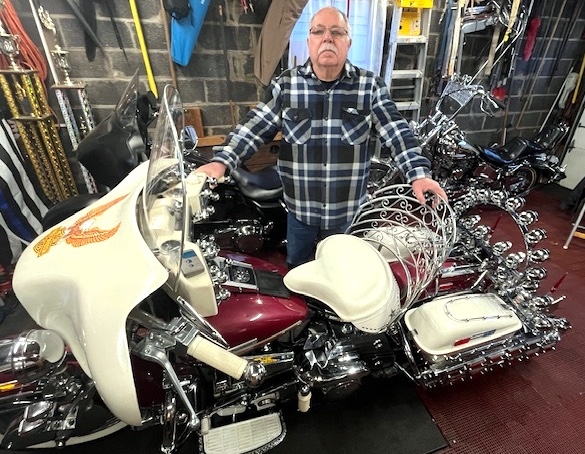
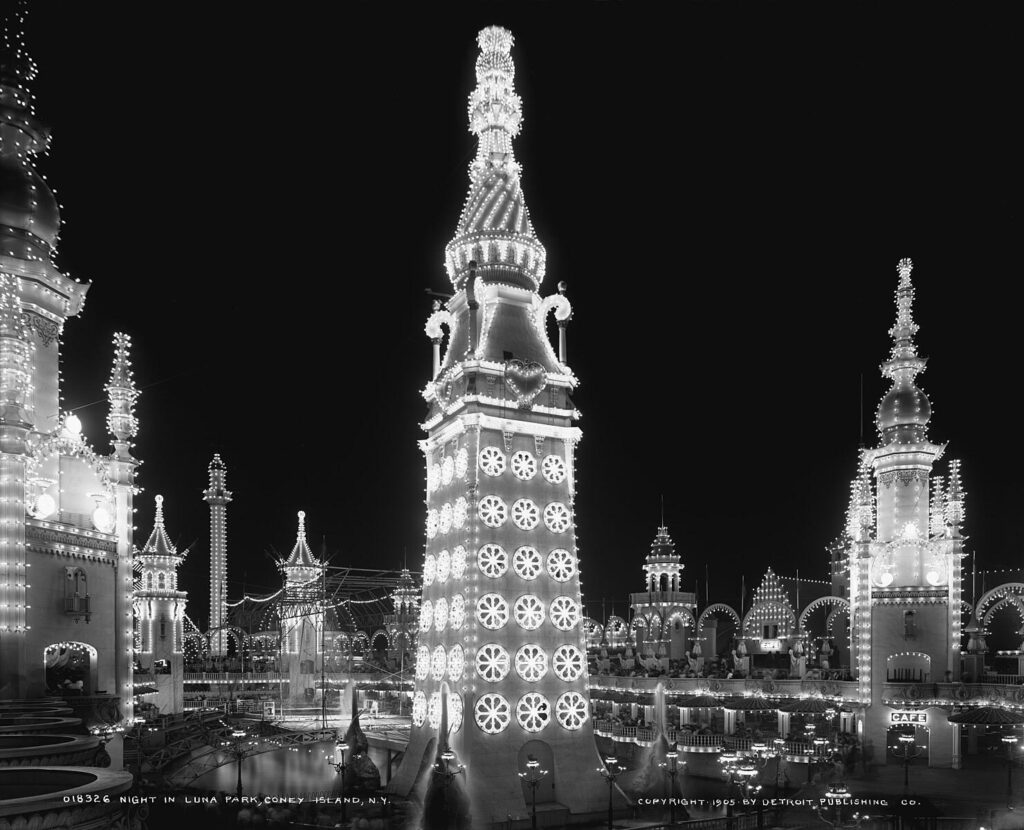
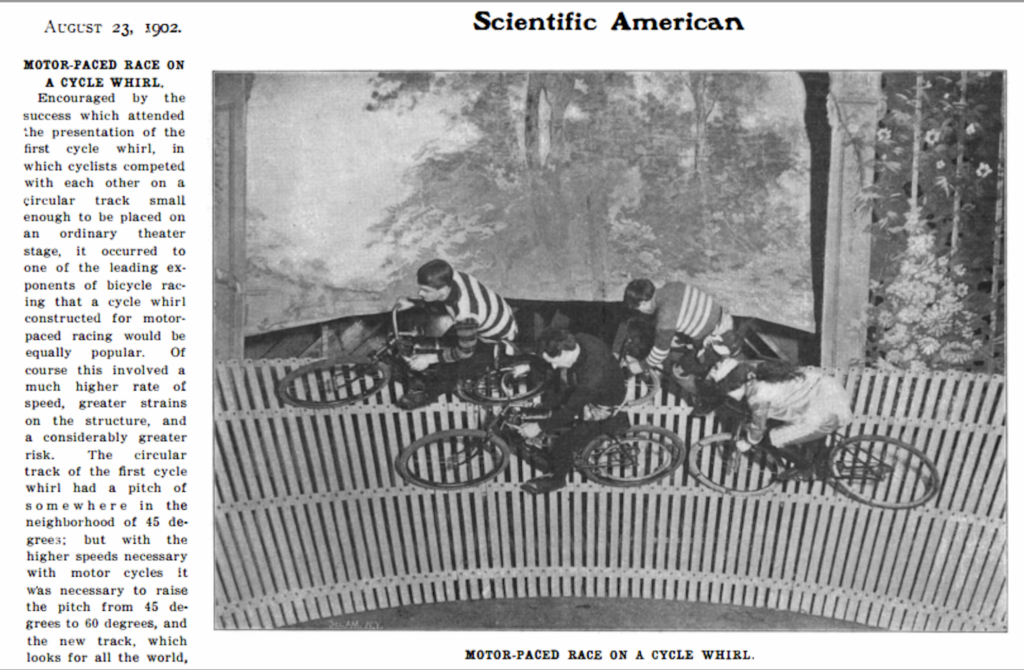
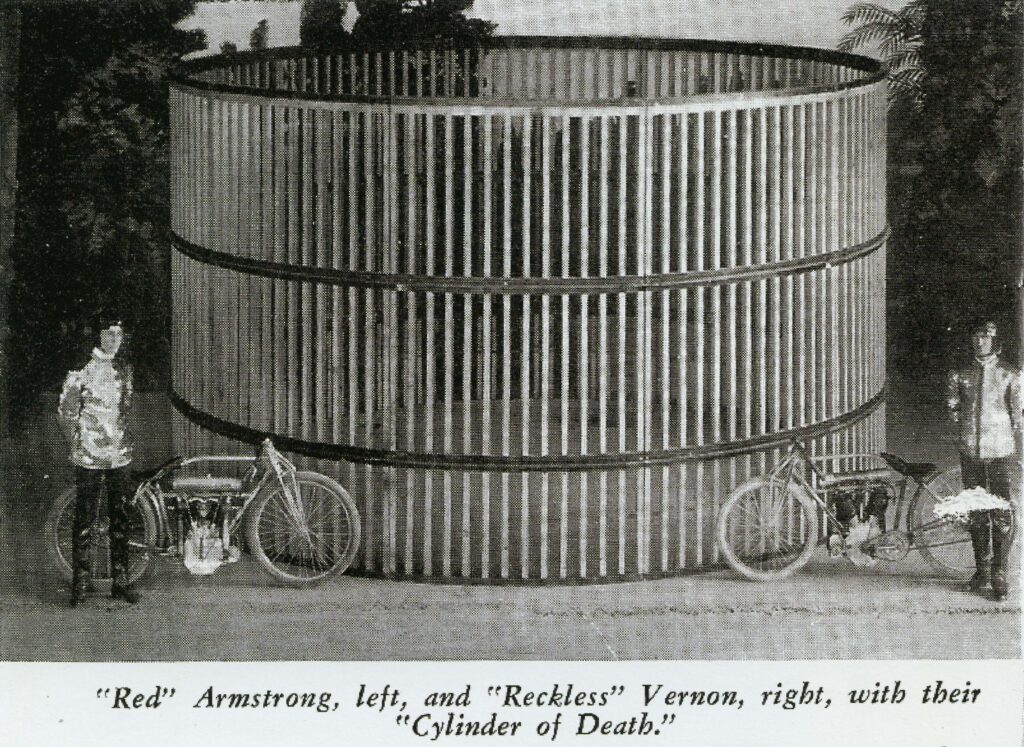
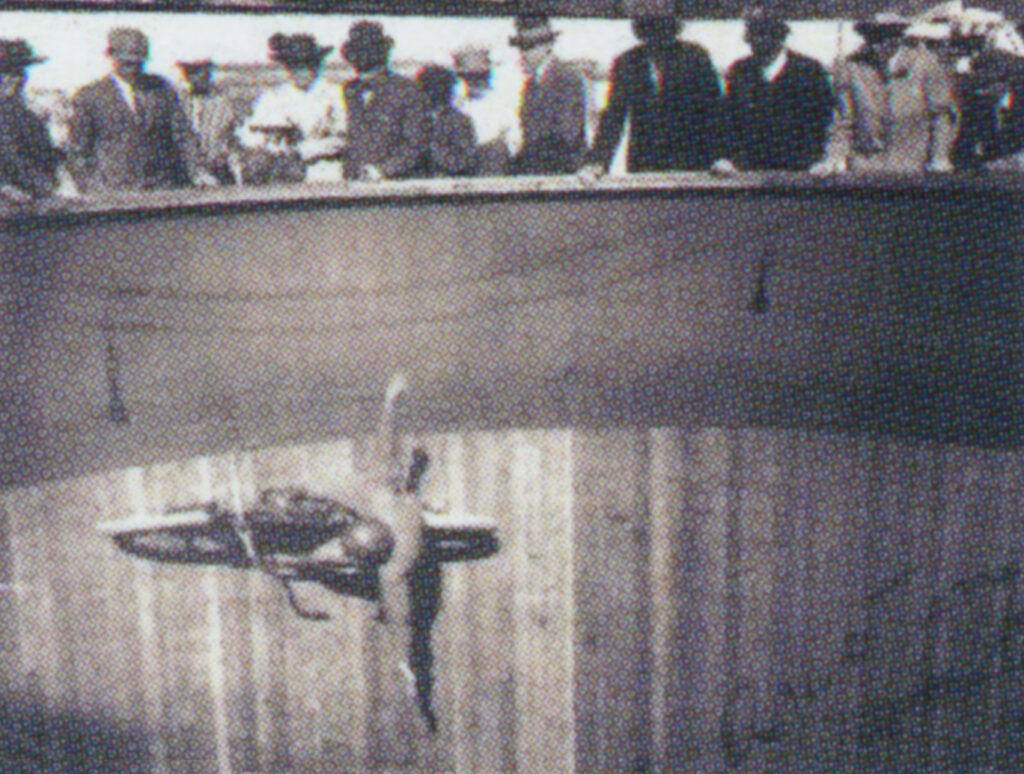
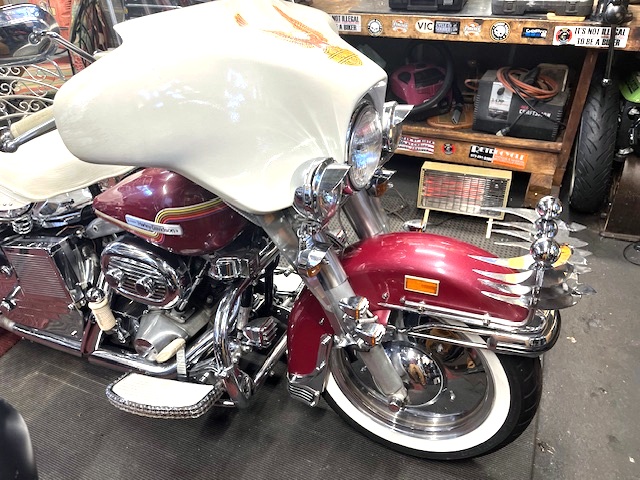
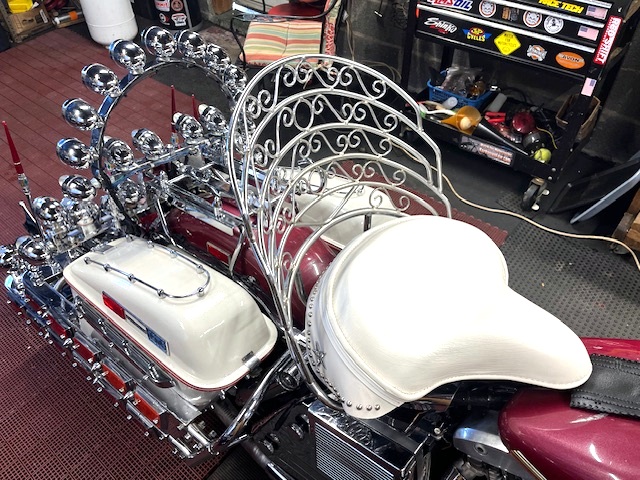
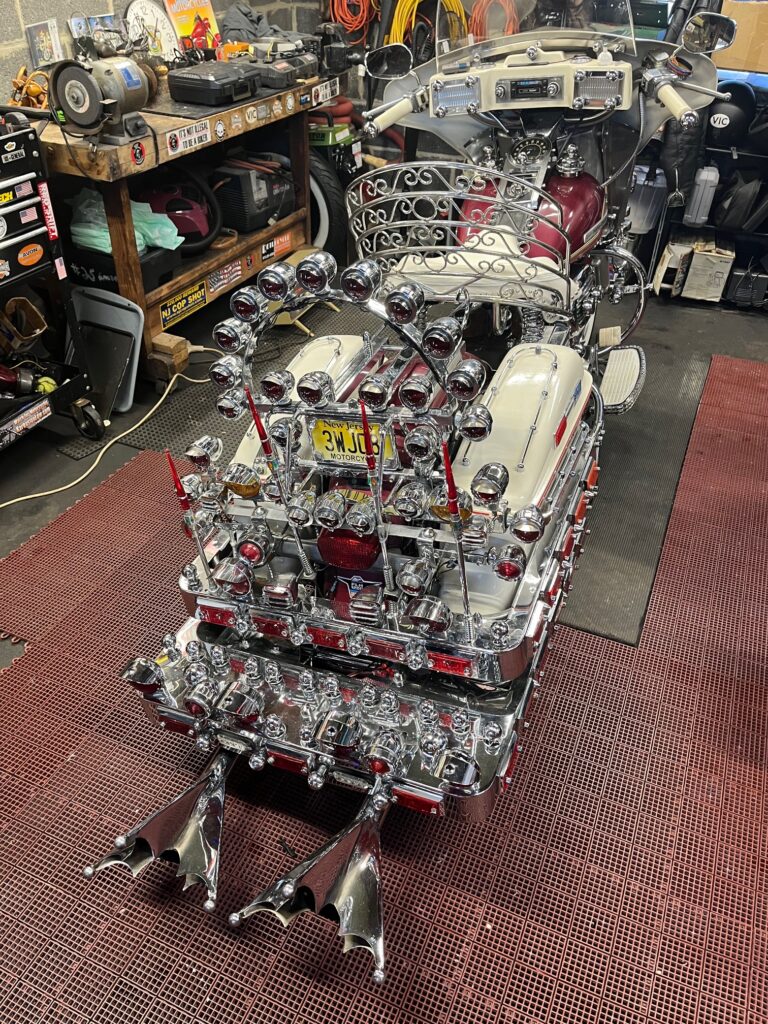
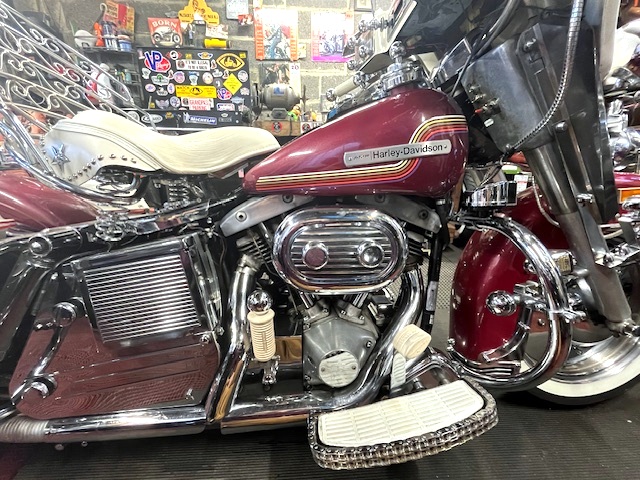
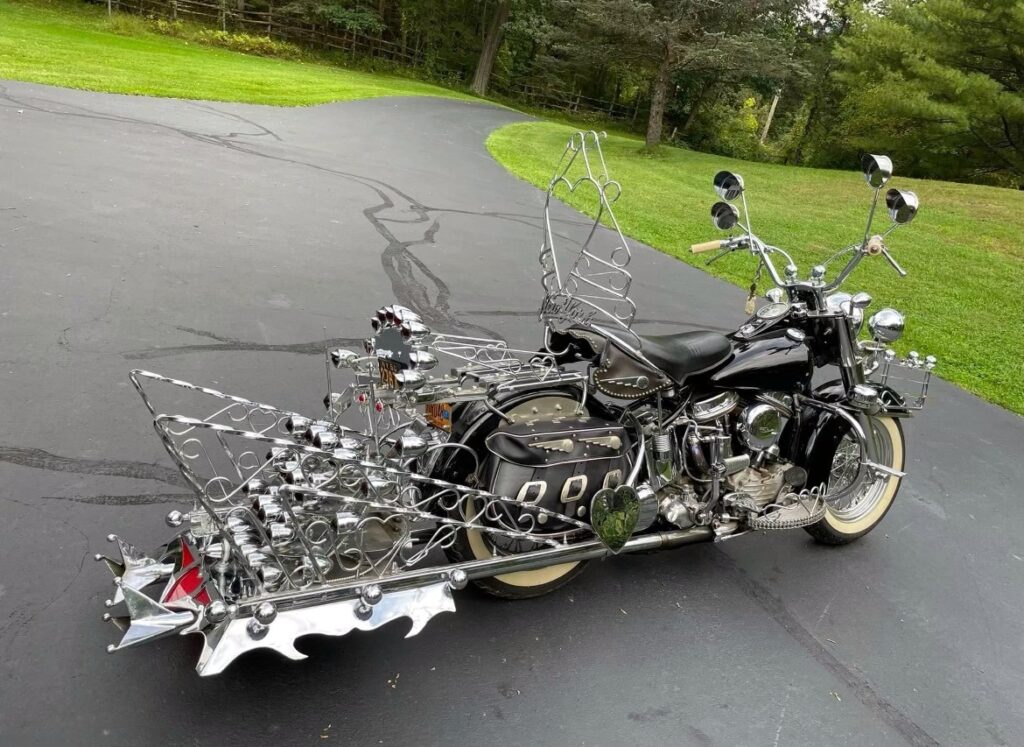
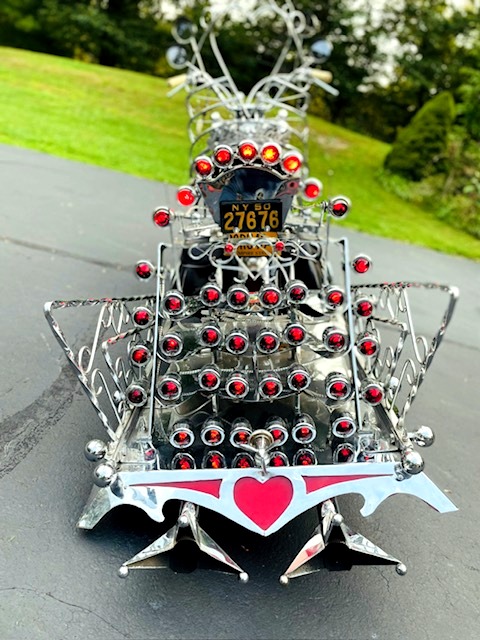
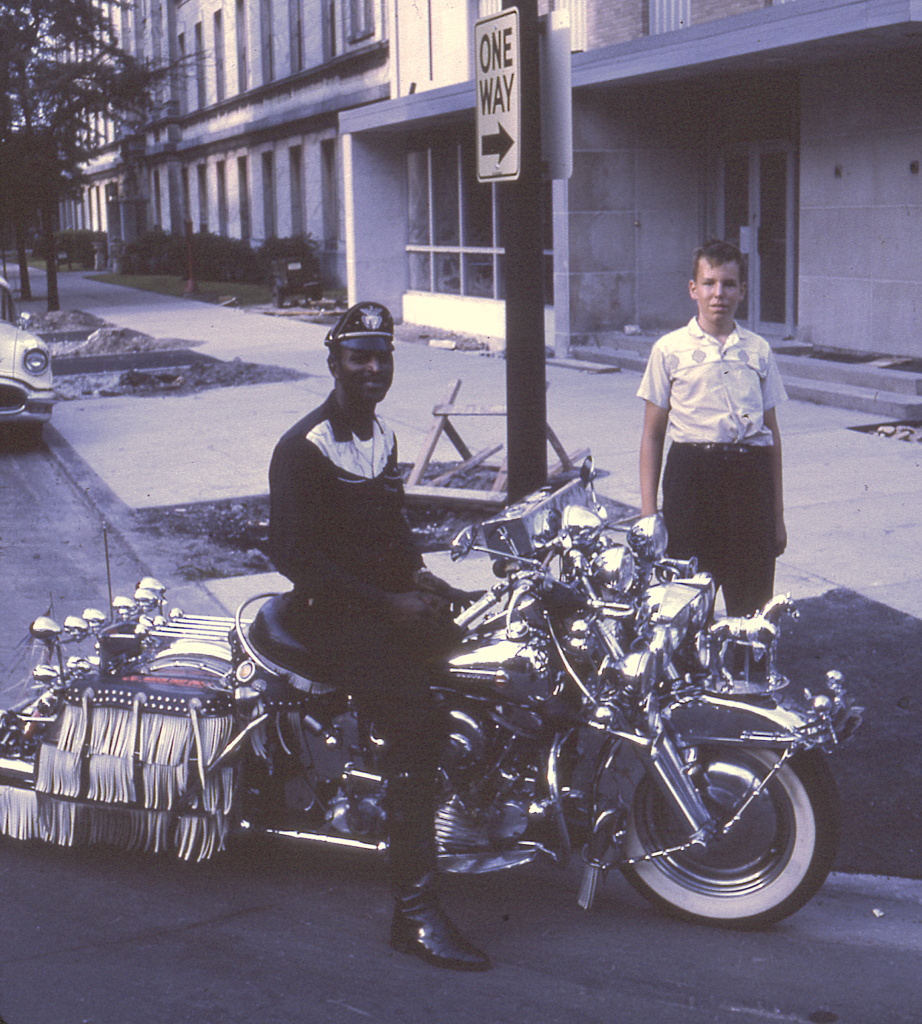
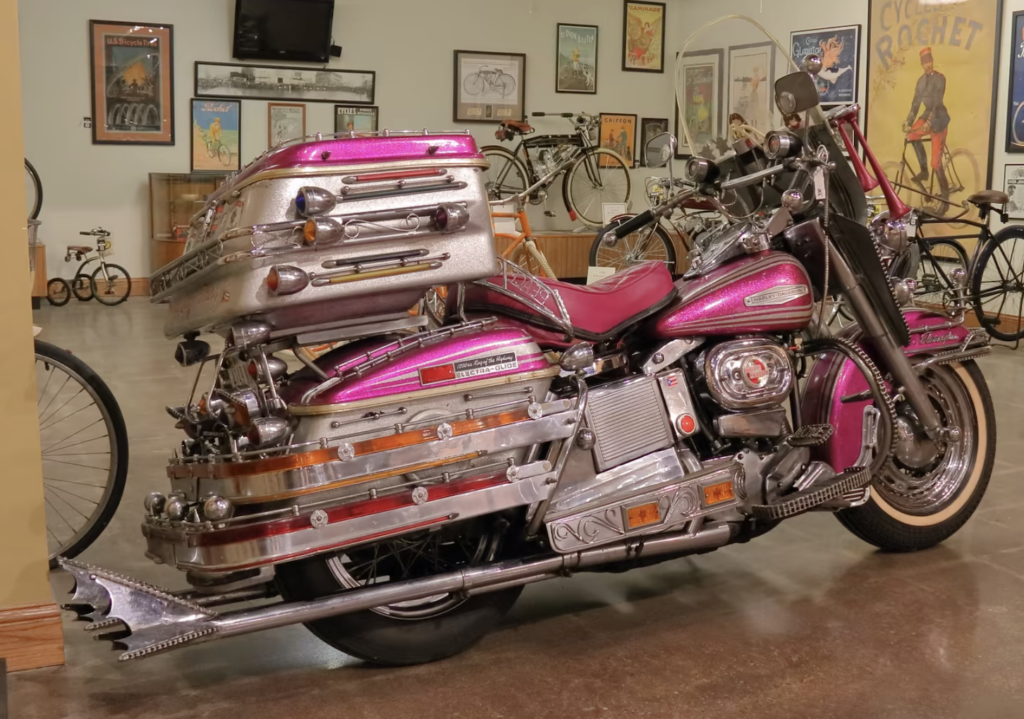
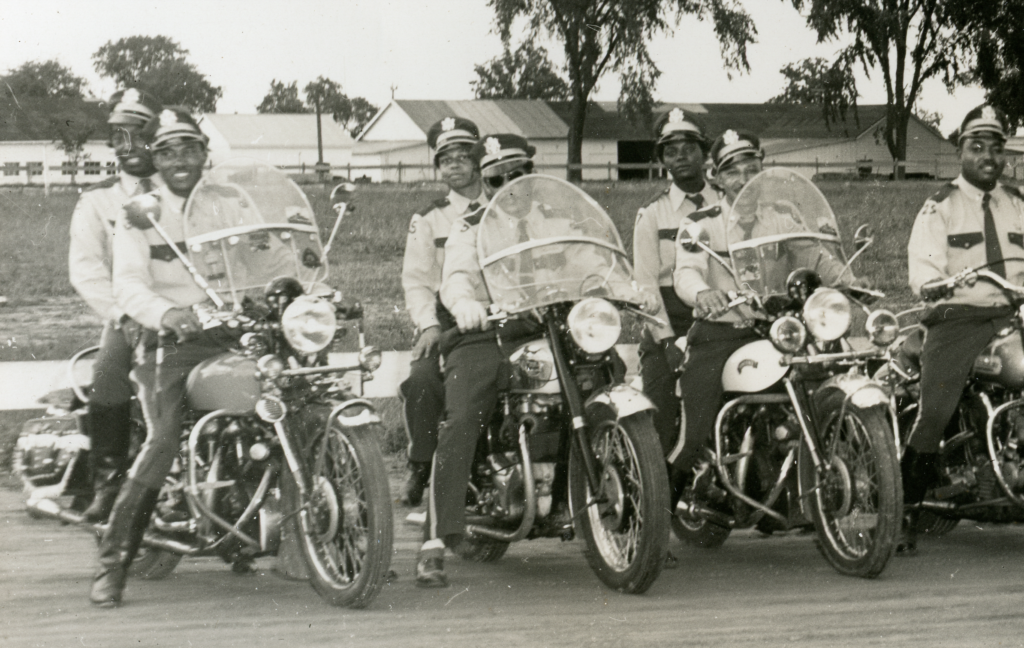
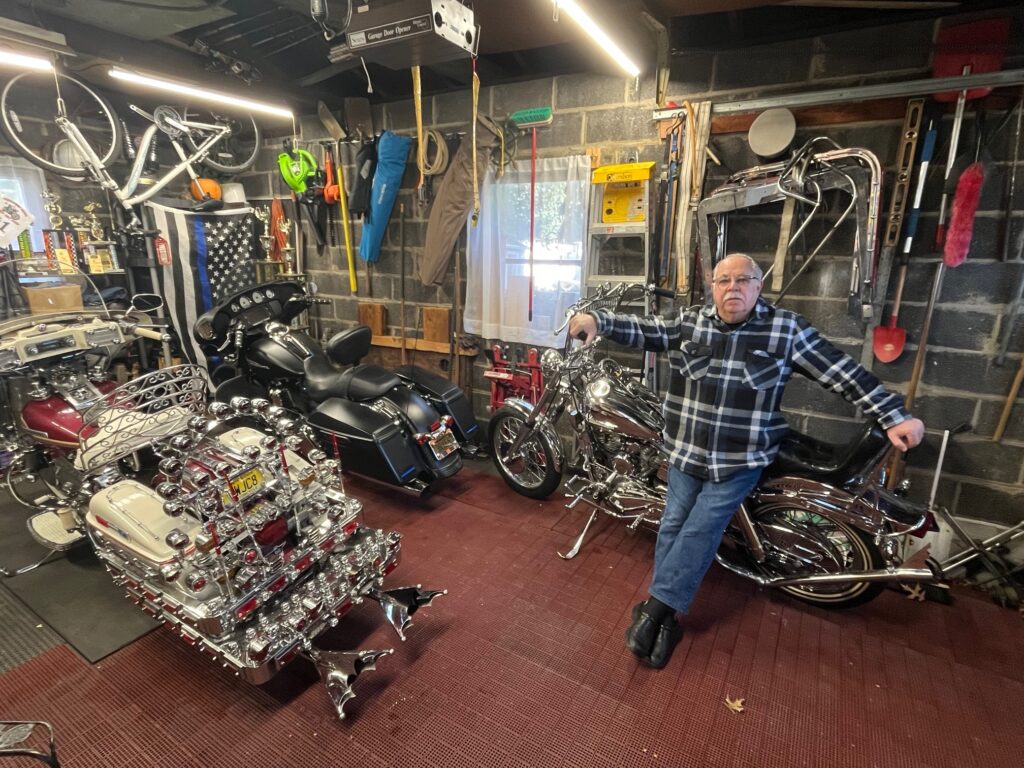
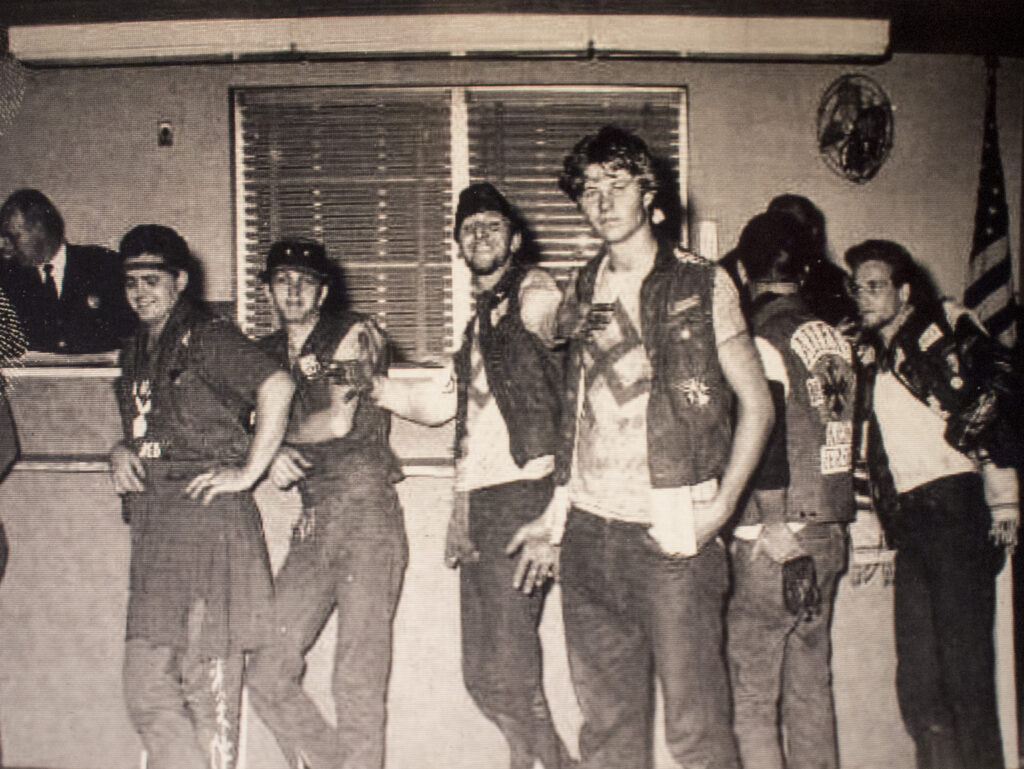
[3] Coney Island- THE UPS AND DOWNS OF AMERICA’S FIRST AMUSEMENT PARK. PBS 1991
[4] Burton Benedict, The Anthropology of World’s Fairs: San Francisco’s Panama Pacific International Exposition of 1915. 1983
[5] Joe McKennon, ‘The Pictorial History of the American Carnival’, 1977.
[6] At the time (1911) the New York Times described the new Wall of Death attraction as, ‘the biggest single sensation at Luna Park’.
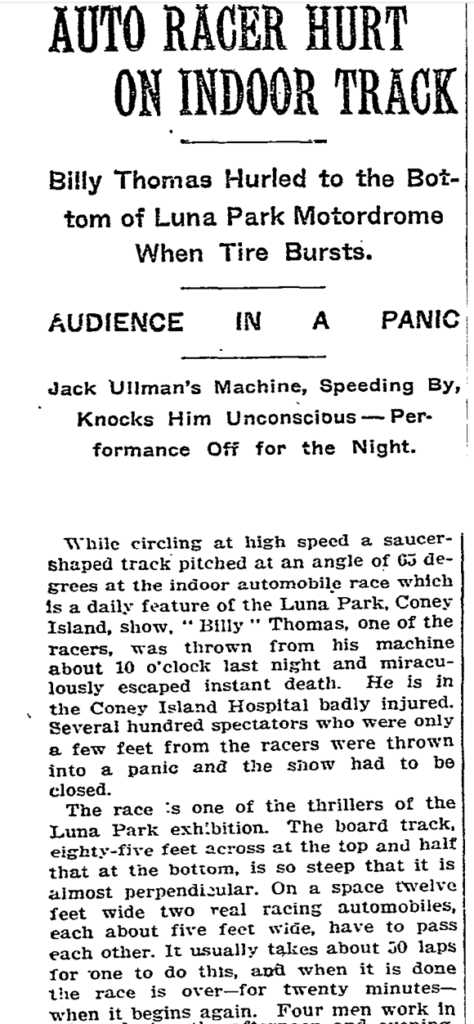
[8] Ernie Barkman, owner/fabricator of ‘Black Swan’, 1950 Panhead Coney Island style build commenting about the style: “Coney Island MC style- History of an Accessory Expression to Full Dress Harley Davidson motorcycles”:
“Guess you could say it started with adding 2 or 4 extra marker lights for blinkers on your Panhead. That seemed satisfying and you added 4 more hooked for extra brake lights.
Now Joe says that looks great, I’m adding a light bar over my rear license plate, and an extra set of horns. And so it started, more lights, more bling, more chrome, bigger horns, added spot lights. There was no stopping the trend to get more stuff. People made money customizing bikes and trying to out- do the next person. The 57 car style influenced the tail fins seen chrome plated on the rear of these bikes. Rear chrome decks were next making a place for rows of lights, and chrome shift knobs for show. I once seen a guy with rows of motorcycle trophies bolted to the rear of these type shelves on his Panhead. Extended exhausts with tips that resemble rocket ship tail fins. Guys would have over 100 added taillights and AM radios, in fact, I knew a guy with a small portable TV between the handlebars. Speaking of handlebars 18” high with chrome scroll work or a name of the bike in Chrome letters. Seat rails became mounting points for added rails and owners names welded in the seat back, or hearts and other scroll work. Chrome hub caps, some with little lights in the spokes, not to mention wide white wall tires. Custom paint jobs turned into an acid trip of colors and sweet design. Pinstripe went from simple to extravagant with some pretty outlandish shows of the painters talents. You had so many lights you needed a special generator from a police bike with extra amperage. Some guys ran an extra car battery in the saddlebag for the added juice. If two rear view mirrors was good… why not 4 mirrors. Sometimes you would see fox tails off the rear for style. There was no end to the creativity a proud motorcycle owner could muster up! I remember in the 60’s going to hill climbs, and scrambler tracks and looking thru the motorcycles for the big Coney Island Style dressers with my Dad.
So why call them Coney Island Style?”
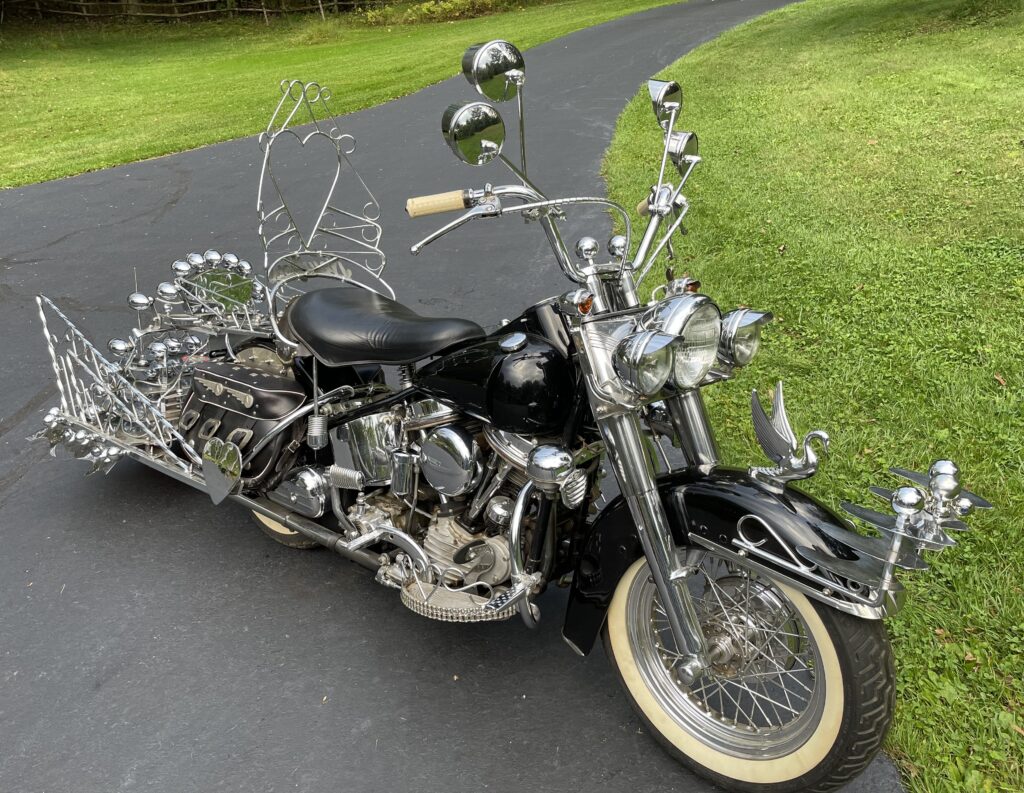
May the style be with you.”
[9] Custom seat rail fabricated by Ernie Barkman.
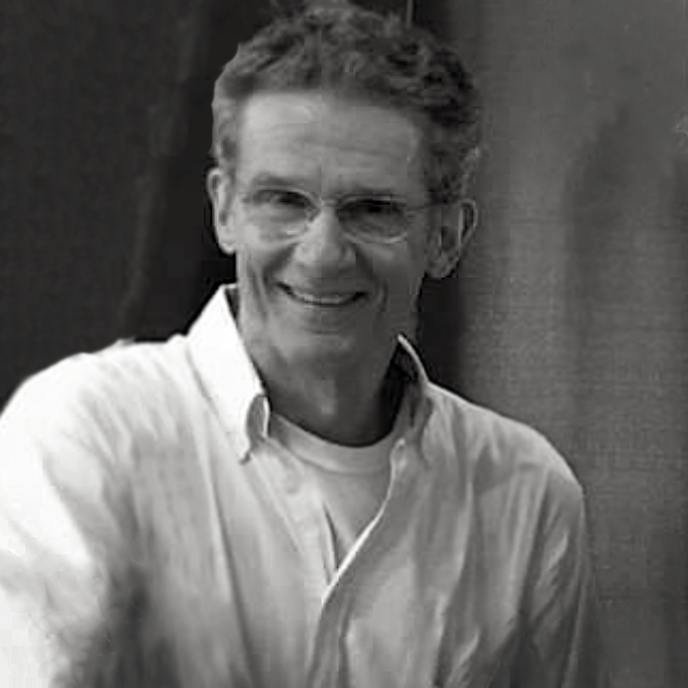

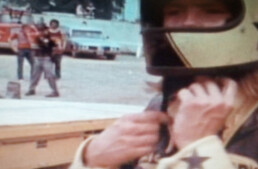
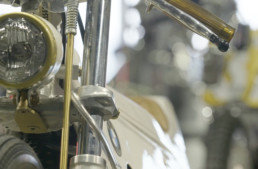
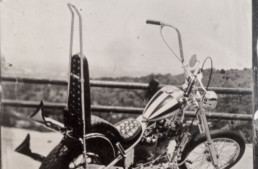
‘ Dresser(s) ‘ to the max . Oh well … to each his or her own ( I assume there’s some female ‘ dresser ‘ owner/riders out there )
Not my thing mind you … but to each his/her own
Great article and photos by the way !
In addendum ;
Love em or hate em ( or in my case ….. respect them ) …
There’s no doubting the craftsmanship that goes into creating these two wheeled behemoths
😎